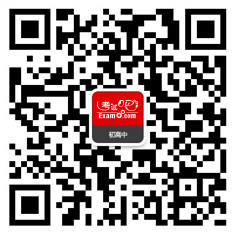耀华中学 马腾
There be句型的基本用法是表示“某地(或某时)存在有某人(或某物),而并非某地(某人、某物或某时)拥有什么东西”,其形式为“There be+代词或名词(短语)+地点/时间状语”。(其实质句式为倒装句)这里there是引导词,没有词义,be是谓语动词,代词或名词(短语)是主语。be要与主语保持人称和数的一致。否定句是在be后加not;一般疑问句是将be放在句首;反意疑问句中的简短问句是由“be(或其否定式)+there”构成。例如
1.There is a desk and two chairs in the room.
(紧挨着be动词的主语是a desk,是单数,故be的形式要用is)
2.There aren‘t two chairs and a desk in the room.(否定句)
3.Is there anything wrong with your ears?(Yes,there is/No,there isn‘t.)
4.There wasn‘t a meeting yesterday,was there?(反意疑问句)
除此之外,还有一个重要句式“有某人在做某事”,要用“There be+sb.+doing sth.+地点/时间状语”。例如
There are several children swimming in the river.河里有几个孩子在游泳。
不难看出,各种时态的变化是通过be动词的变化来体现的。我们在使用过程中,首要的问题是弄清楚There be与have所表示的意义。There be句型表示“存在”关系,have表示“所属”关系,两者不能混合在一个句子中。
例如:我们要说“明天有一个班会。”
(1)There will have a class meeting tomorrow.(×)
(2)There is going to/will be a class meeting tomorrow.(√)
有时候既表示“存在”又表示“所属”时,两种都可以用。
例如:Class Three have a map of China on the wall.(地图为三班学生所有。)
There is a map of China on the wall in Class Three.(地图存在于三班。)
由此看来,There will have是错误的搭配方式。
使用There be句型时除了掌握基础知识外,还应注意以下问题
1.There be句型的考查的是将be动词与主语结合在一起进行的,即主谓的一致性。
例如:(1)There is _____ on the floor.
(2)There are _____ on the floor.
选项:A.cat B.water C.boxes D.football
解析:(1)由is可知主语应是可数名词单数或不可数名词,而A、D项中都缺少冠词a,故选B,同理可知(2)应选C。
2.如果作主语的是一个短语,则常常考查短语中的修饰语。可数名词的复数形式前可以用any,some,few,a few,many或用数词+hundred/thousand/million,hundreds/thousands/millions of,no等修饰;不可数名词可以受any,some,no,little,a little,much等词的修饰。例如
(1)There were_____students in our school.
A.hundreds B.eight hundred
C.eight hundreds of
(2)There is _____water.You needn‘t get some more.
A.few B.little C.much
解析:(1)由数词与名词的搭配关系可知选B,(2)由water可知排除A项,再由后一句意思便知选C。
3.注意不定代词的用法。
(1)不定代词在句中作主语,谓语动词要用单数形式。例如:There is nothing in the fridge.(2)不定代词受形容词修饰时要放在形容词前面。例如:There is something interesting in today‘s newspaper.
4.There be句型的反意疑问句,要注意陈述部分的形式。
如果陈述部分含有little,few,no,nobody,none等否定词时,后面的简短问句中要用肯定形式。例如:There is nobody in the room,is there?
但有的含有否定意义的形容词修饰不定代词时则仍看做肯定句式。例如:There is something unusual in the room,isn‘t there?
5.要注意句子前后意思的一致性。
有的句子单独看其意义时,可能不止一个选项适合于它,但如果联系上下句的意思则只能有一个恰当的选项。
例如:(1)There is _____ food.You needn‘t buy any.

